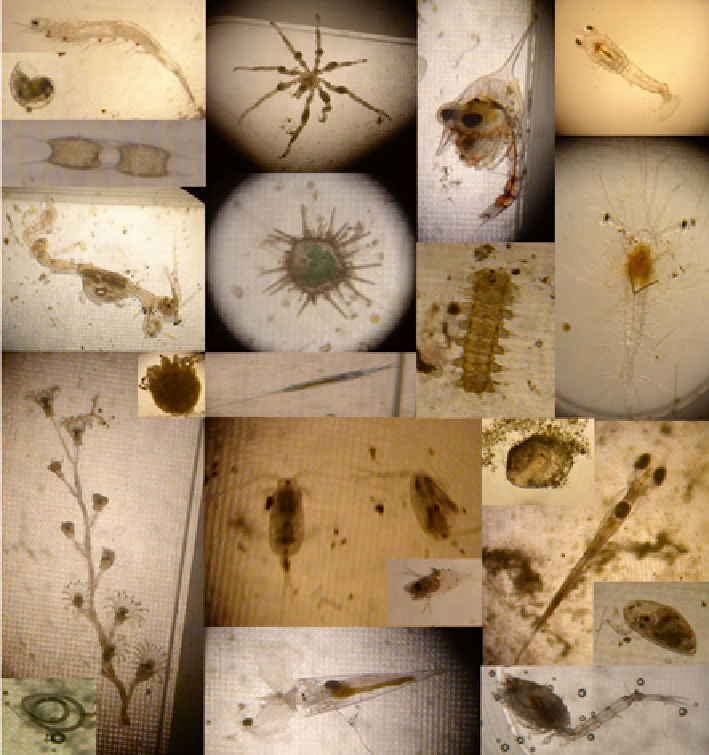Environmental Engineering Reference
In-Depth Information
Fig. 1
Variety of species found in ballast water samples documenting that also fragile organisms
survive the ballasting processes
It is the free-living, often larval, stages in the species life-cycle that are most
likely to be transported with ballast water (Hewitt and Campbell
2010
). The Fig.
1
shows some examples of organisms which were found in ballast water samples.
Very often such stages may be taken-up during the night, since many planktonic
organisms undergo vertical migrations to appear higher in the water column during
darkness. These vertical migration patterns are widely recognised within marine
and freshwater environments. Adult stages of bottom living organisms may also
become entrained in ballast water uptake once they occur in the water column. This
may be due to strong currents, storm activity or nearby dredging operations which
stir up bottom sediment and organisms.
Ballast water studies conducted since the 1980s in different parts of the world
have shown that ships, to an enormous extent, facilitate the transfer of aquatic

Search WWH ::

Custom Search